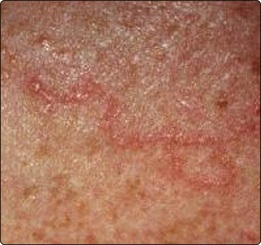34. Parasitic infections
The helminths are subdivided into nematodes, cestodes and trematodes.
Soil-transmitted nematodes (roundworms)
The roundworms, apart from Enterobius vermicularis, can survive outside of the host and are transmitted by faecally contaminated soil. Their larvae require migration through lungs and tissues before maturing to an adult worm. This migration induces an eosinophilia. Diagnosis is usually made by stool concentration for ova and parasites. For treatment, many options are available (Ch. 44).
Strongyloides larva are excreted by faeces and develop adult worms in soil. Their larvae penetrate the skin of the human host in order to migrate via the lung to the bowels. These infective larvae can penetrate the bowel or anal skin and autoinfect the host, causing the characteristic larva currens (Fig. 3.34.1). Immunosuppression can induce a hyperinfection syndrome, with peritonitis and Gram-negative sepsis.
< div class='tao-gold-member'>
Stay updated, free articles. Join our Telegram channel

Full access? Get Clinical Tree










